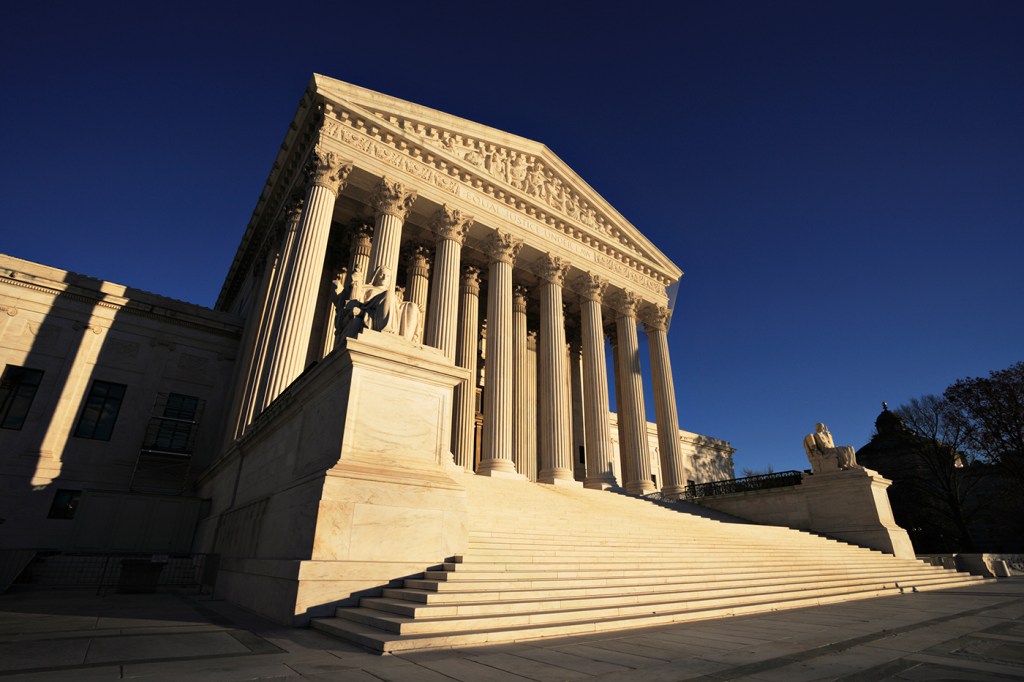The history of affirmative action in America

This month, the federal Justice Department announced it was looking into “intentional race-based discrimination in college and university admissions.” It’s the latest, but not the first, affirmative action challenge. For that, one must go back to 1978.
But let’s go back even further.
Affirmative action—policies by which an institution actively engages in efforts to improve opportunities for historically excluded groups in American society—is a product of the civil rights movement in the U.S., according to Dan Urman, director of the undergraduate minor in law and public policy.
Urman said that while former President John F. Kennedy issued an executive order on affirmative action while he was in office, the policy is more often associated with former President Lyndon B. Johnson, who also issued an executive order on it.
“Throughout the years, affirmative action has been defined to include a lot of different things, and that’s part of what makes it so contentious,” Urman said.
At the core, the court does not want to engage with a lot of America’s racial history. The justices would rather point to something like the ‘diversity rationale’ (that there is inherent benefit to diversity), as opposed to what some people would say are structural inequalities.
Daniel Urman
Director of the undergraduate minor in law and public policy
For example, in his commencement address at Howard University in 1965, Johnson himself described it with a metaphor: “You do not take a person who, for years, has been hobbled by chains and liberate him, bring him up to the starting line of a race and then say, ‘you are free to compete with all the others,’ and still justly believe that you have been completely fair. Thus it is not enough just to open the gates of opportunity. All our citizens must have the ability to walk through those gates.”
Referring to this passage, Urman said, “That, I think, captures it very well. This is a remedy for past discrimination.”
This definition shifted, however, with the first affirmative action case that went to the Supreme Court.
Regents of the University of California v. Bakke
In Regents of the University of California v. Bakke, Allan Bakke, a white man, argued that he had been excluded from the University of California Medical School at Davis, twice, solely on the basis of his race.
As part of its affirmative action program at the time, the school had reserved 16 spots in each entering class for ethnic minority students.
The Supreme Court ruled, 5-4, that while universities may consider an applicant’s race as one of many factors in admissions, they may not impose quotas or set aside a specific number of places for minorities.
“This was really a watershed moment in affirmative action,” Urman said. “The court was basically saying that the government can use race as a factor in choosing students, but because of the benefits that flow from diversity in the classroom, not, as LBJ described it, to remedy centuries of oppression.”
Grutter v. Bollinger and Gratz v. Bollinger
The next affirmative action cases to reach the Supreme Court came 25 years later—Grutter v. Bollinger and Gratz v. Bollinger, both in 2003.
In the first, Barbara Grutter, a white resident of Michigan, was denied admission to the University of Michigan Law School. The law school admissions process utilized race as a factor in making the decision because it served a compelling interest in achieving diversity among its student body, according to the Supreme Court opinion.
A 5-4 Supreme Court ruling supported the process of considering an applicant’s race among several factors in making admissions decisions.
In the second case, Jennifer Gratz, a white woman, was denied admission to the University of Michigan’s College of Literature, Science, and the Arts. At the time, the university’s undergraduate admissions office used a point system to evaluate its applicants, and applicants were awarded extra points if they were members of an underrepresented minority.
The Supreme Court ruled, 6-3, that automatically giving points to minorities to boost their chances of acceptance was unconstitutional, as it wasn’t serving to help individually consider each applicant.
The pair of cases, Urman said, is “particularly relevant to a lot of the debate today.”
“In the Grutter case, the Supreme Court affirmed that diversity is a compelling interest for any institution, and something important to consider among other factors,” Urman said. “But the Gratz case showed that putting people into batches was not.”
Fisher v. University of Texas
Finally, in 2013 and again in 2016, the Supreme Court considered Fisher v. University of Texas, a case in which Abigail Fisher, a white woman, contended that the school’s denial of her application violated the Equal Protection Clause of the Constitution.
In 2013, “the Supreme Court kicked the case back down to a lower court of appeals,” Urman explained. Three years later, when it came up again, the court ruled, 4-3, that the school’s use of race as a consideration among a number of factors wasn’t unconstitutional.
‘Harder, deeper issues that the court seems to punt on’
“The overarching message here is that the Supreme Court is uncomfortable with a non-individual review of applicants, as we saw in the Gratz case,” Urman said. “They don’t like when institutions put people into categories, but they do like the idea of admissions officers carefully reviewing each application.”
However, all these messages might miss the bigger issue, Urman said.
“At the core, the court does not want to engage with a lot of America’s racial history,” he said. “The justices would rather point to something like the ‘diversity rationale’ (that there is inherent benefit to diversity), as opposed to what some people would say are structural inequalities.”
“The Supreme Court isn’t addressing these harder issues,” Urman said. “In other words, there are harder, deeper issues that the court seems to punt on.”





